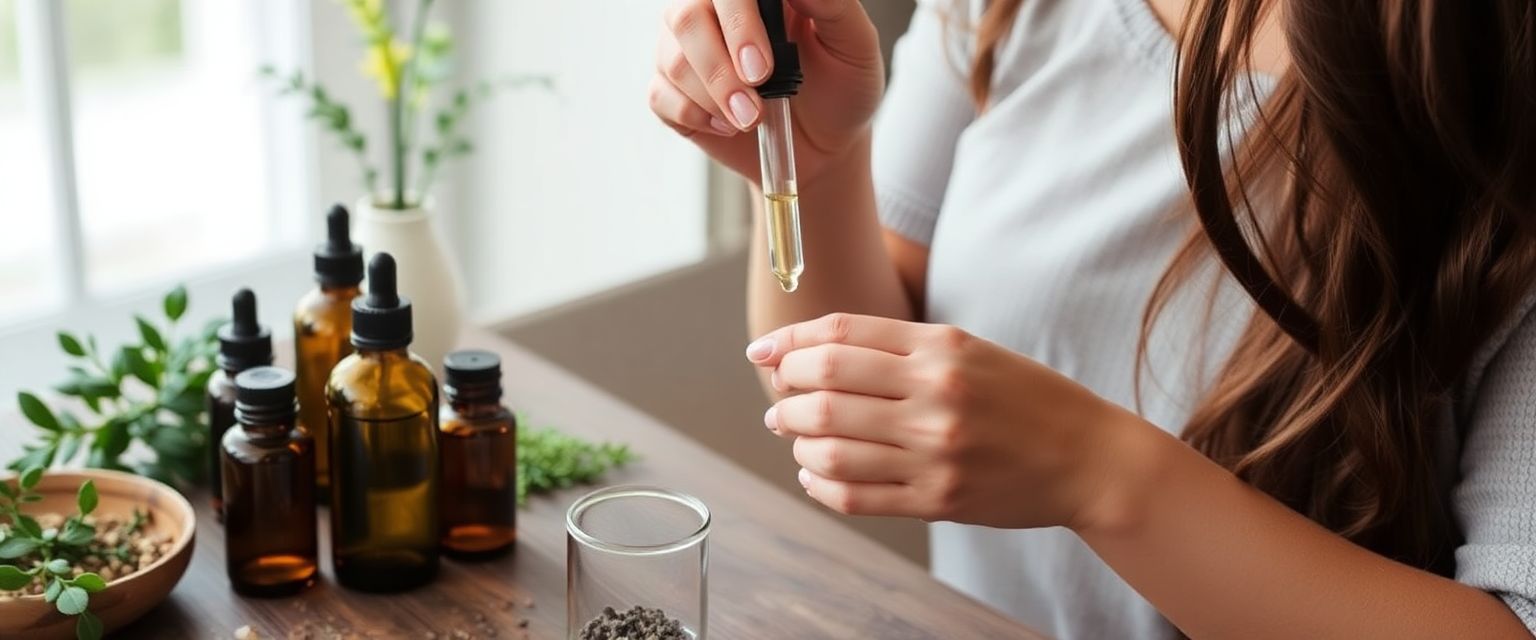The Importance of Scent and Emotion
Our sense of smell is intimately connected to our emotions and memories. This powerful link stems from the close relationship between our olfactory system and the limbic system in our brain. When we inhale essential oils, their molecules travel through our nasal passages and interact with olfactory receptors, sending signals directly to areas of the brain that process emotions and memories.
This unique connection explains why certain scents can instantly transport us to specific moments in time or evoke powerful feelings. It’s this mind-body interaction that makes aromatherapy such an effective tool for emotional support and relief.
Essential Oils for Emotional Balance
Let’s explore some of the most potent essential oils for emotional balance and their specific benefits:
1. Lavender
Lavender is renowned for its calming properties. It helps reduce anxiety, promote relaxation, and improve sleep quality.
The scent of lavender can lower heart rate and blood pressure, creating a sense of tranquility.
Recommended Product:
Mumianhua Lavender Essential Oil – This lavender essential oils is pure and natural, offering a delightful floral aroma that is perfect for those who appreciate serene scents. Embrace the calming essence of lavender and infuse your surroundings with its tranquil, floral notes
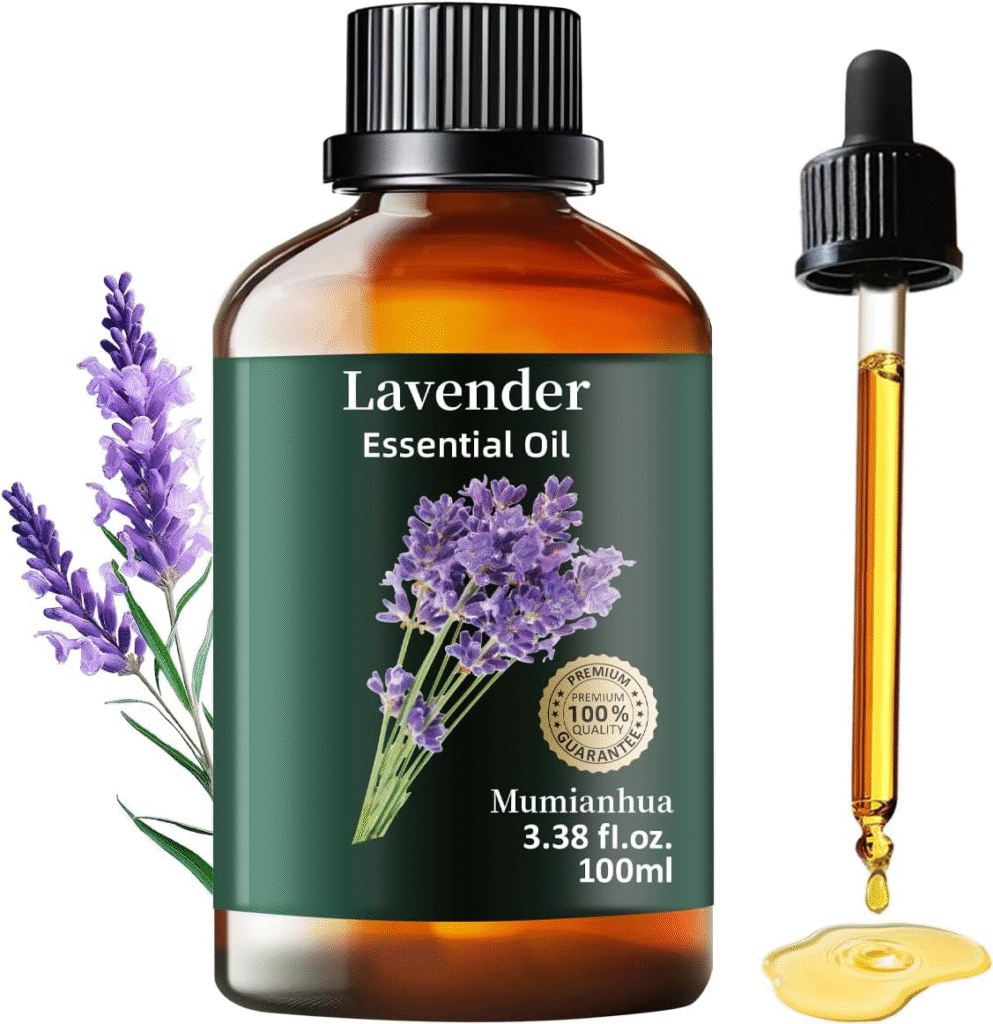
2. Bergamot
This citrusy oil is uplifting and can help reduce feelings of depression and stress. Bergamot has a unique ability to both calm and energize, making it excellent for balancing mood swings.
Recommended Product:
Kukka Bergamot Essential Oil – This bergamot aromatherapy oil is a zesty favorite in aromatherapy to create a fresh, inviting space. Diffuse 2-3 drops of bergamot essential oil diffuser for 30 minutes to fill spaces with a citrusy aroma.
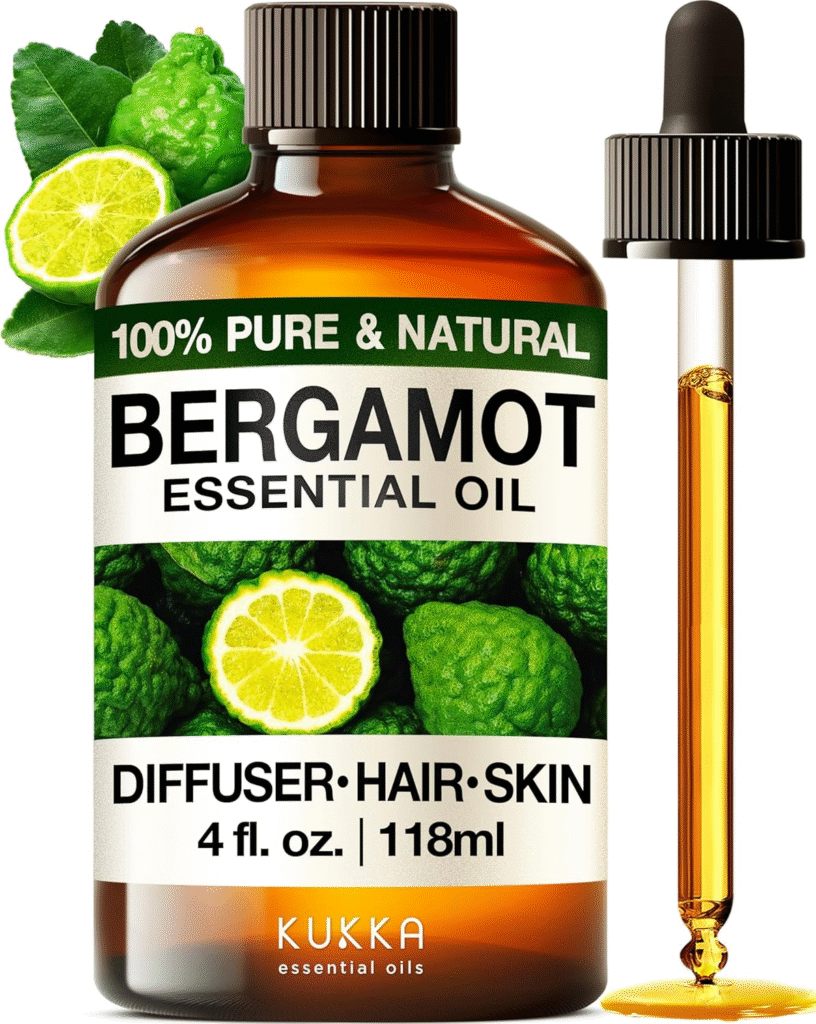
3. Ylang-ylang
With its sweet, floral scent, ylang-ylang is excellent for boosting mood and self-esteem. It can help reduce tension and promote feelings of joy and optimism.
Recommended Product:
Nirvana Nurture Ylang Ylang Essential Oil – This Ylang Ylang oil offers a plethora of benefits, making it a valuable addition to self-care routines and holistic wellness practices. It is used in aromatherapy for its sweet aroma, and its ability to promote relaxation and uplift mood. Ylang Ylang oil is rejuvenate skin benefits, balance oil production, hydrate the skin. Ylang Ylang oil is known for its aphrodisiac properties, enhancing sensuality.
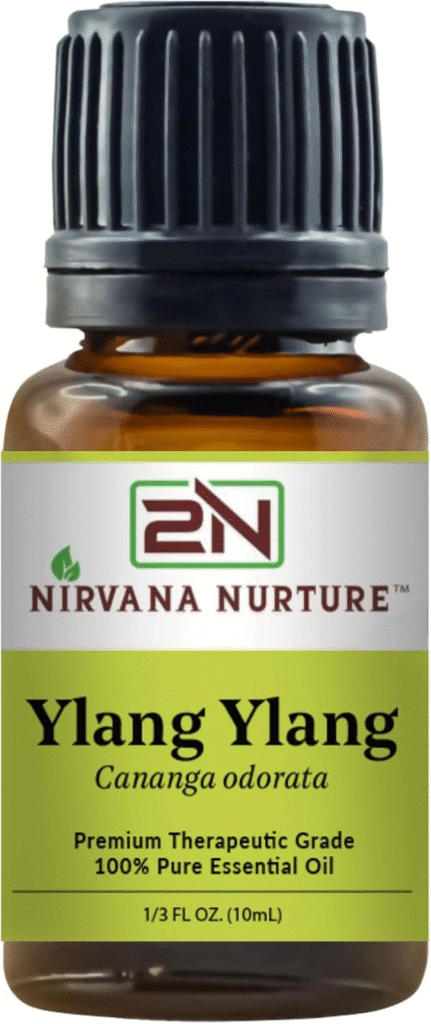
4. Frankincense
This grounding oil can help center your emotions and promote feelings of peace. Frankincense is often used in meditation practices to enhance spiritual awareness and emotional balance.
Recommended Product:
Brooklyn Botany Frankincense Essential Oil – This Frankincense Oil is a versatile oil and can be used for aromatherapy, in a diffuser and on skin. Essential oils need to be diluted with the carrier oil of your choice. This oil blends well with other oils like, Cypress, Lavender, Lime, Lemon, Geranium, Rose, Sandalwood, Wild Orange, Ylang Ylang, and Clary Sage.
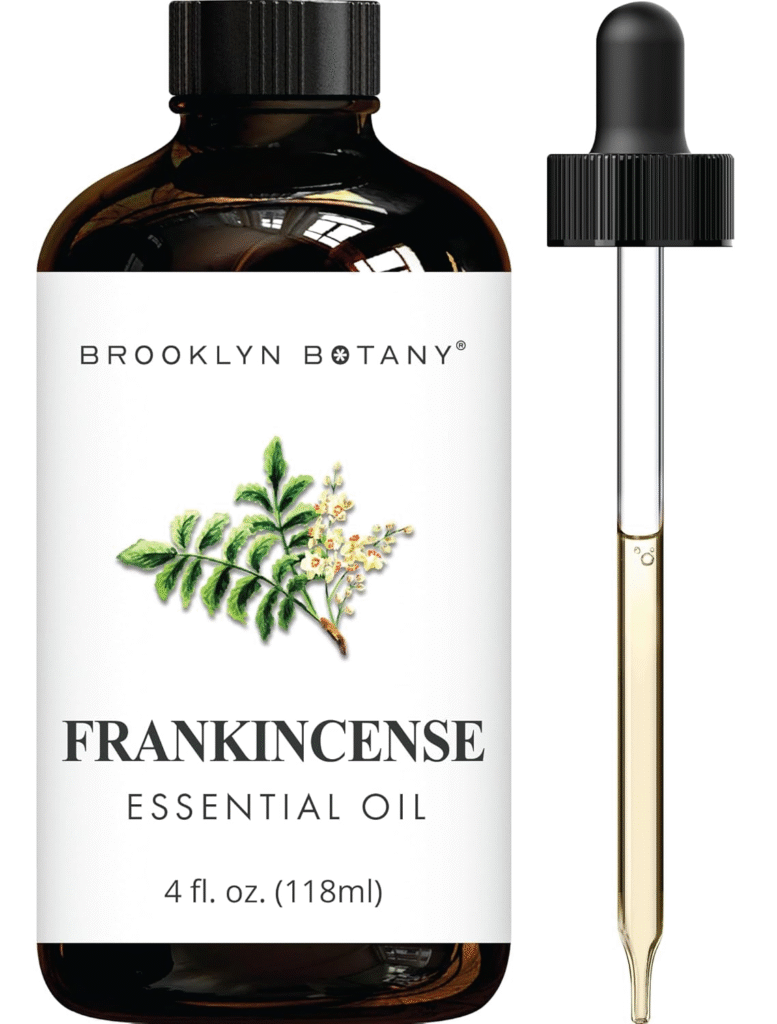
5. Peppermint
Invigorating and refreshing, peppermint can help improve mental clarity and boost energy. It’s particularly useful for combating mental fatigue and improving focus.
Recommended Product:
Viva Doria 100% Pure Northwest Peppermint Essential Oil – This peppermint essential oil possesses the utmost purity and authenticity in its scent. Our meticulous process guarantees that each oil embodies the purest and most precise aromas available.
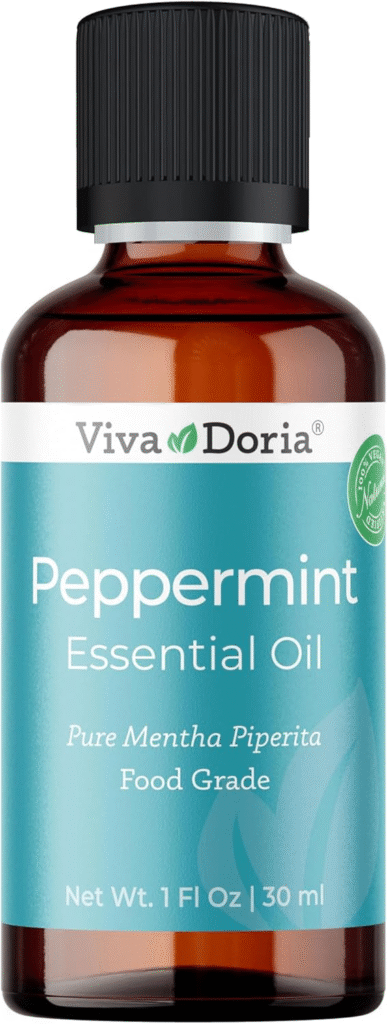
The Art and Science of Blending
Creating your own emotional support blends combines both artistic creativity and scientific understanding. Here’s a detailed guide to get you started:
1. Define Your Emotional Goal
Before selecting oils, clearly identify what emotional state you want to achieve or what feeling you want to address. Are you looking to reduce anxiety, boost confidence, improve focus, or promote relaxation?
Your goal will guide your oil selection and blending process.
2. Select Complementary Oils
Choose 2-4 oils that work well together and align with your emotional goal. Consider the therapeutic properties of each oil and how they might interact.
For example, if you’re creating a calming blend, you might combine lavender for relaxation, bergamot for mood-lifting, and frankincense for grounding.
3. Understand Note Categories
Essential oils are often categorized into top, middle, and base notes:
- Top notes: These are light, fresh scents that evaporate quickly. Examples include lemon, peppermint, and eucalyptus.
- Middle notes: These form the heart of the blend and last longer than top notes. Examples include lavender, rosemary, and chamomile.
- Base notes: These are heavy, rich scents that evaporate slowly and help fix the blend. Examples include sandalwood, patchouli, and vanilla.
A well-balanced blend typically includes oils from each category.
4. Determine Your Ratios
A good starting point is to use 30 drops total for a 10ml roller bottle. Your primary oil should make up about 50% of the blend, with the remaining oils in smaller proportions.
For example:
- 15 drops of your primary oil
- 9 drops of your secondary oil
- 6 drops of your tertiary oil
5. Choose a Carrier Oil
Carrier oils dilute essential oils and make them safe for topical use. Common options include:
- Jojoba oil: Similar to human sebum, it’s easily absorbed and suitable for all skin types.
- Sweet almond oil: Rich in vitamins and minerals, it’s great for dry or sensitive skin.
- Fractionated coconut oil: Light, odorless, and doesn’t clog pores.
6. Blend and Test
Mix your oils in a dark glass bottle. Essential oils can degrade plastic and light can affect their potency.
After blending, let the mixture sit for 24-48 hours.
This allows the scents to meld and mature.
7. Adjust as Needed
After the resting period, test your blend. If it’s not quite right, make small adjustments.
You can always add more of an oil, but you can’t take it away once it’s in the blend.
DIY Blend Recipes for Common Emotional Needs
Here are some starter recipes to inspire your blending journey:
Stress-Relief Blend
- 15 drops Lavender
- 9 drops Bergamot
- 6 drops Frankincense
This blend combines the calming effects of lavender, the mood-lifting properties of bergamot, and the grounding nature of frankincense to create a powerful stress-busting aroma.
Mood Lifter Blend
- 12 drops Orange
- 10 drops Bergamot
- 8 drops Lemon
This citrus-based blend harnesses the uplifting and energizing properties of these oils to combat feelings of sadness or low mood.
Calming Sleep Blend
- 15 drops Lavender
- 10 drops Cedarwood
- 5 drops Vetiver
This combination promotes deep relaxation and prepares the mind and body for restful sleep.
Focus and Clarity Blend
- 12 drops Peppermint
- 10 drops Rosemary
- 8 drops Lemon
This invigorating blend helps improve concentration and mental clarity, perfect for work or study sessions.
Confidence Booster Blend
- 15 drops Bergamot
- 9 drops Ylang-ylang
- 6 drops Frankincense
This blend combines oils known to promote self-esteem and positive self-image.
Application Methods
Once you’ve created your perfect blend, there are several ways to use it:
1. Roller Bottles
Roller bottles are ideal for on-the-go application. Apply your blend to pulse points like wrists, behind ears, and on the neck.
The heat from these areas helps diffuse the scent throughout the day.
2. Diffusers
Add a few drops of your blend to a diffuser to fill your space with emotional support. This method is particularly effective for creating a mood in a room or during meditation and yoga practices.
3. Personal Inhalers
Small, portable inhalers allow for discreet use throughout the day. Simply open and inhale deeply when needed.
4. Bath Oils
Add a few drops of your blend to a carrier oil, then add this mixture to your bathwater for a relaxing, aromatherapeutic soak.
5. Massage Oils
Dilute your blend in a carrier oil for a therapeutic massage. This combines the benefits of aromatherapy with the relaxing effects of massage.
6. Linen Sprays
Create a linen spray by adding your blend to distilled water and a small amount of alcohol to help the oils disperse. Use on pillows, sheets, or in the air to create a soothing atmosphere.
Safety Considerations
While essential oils are natural, they’re also potent and should be used with care:
- Always dilute properly before topical use. A general guideline is 2-3 drops of essential oil per teaspoon of carrier oil.
- Perform a patch test before using a new oil or blend to check for any allergic reactions.
- Some oils, particularly citrus ones, can cause photosensitivity. Avoid sun exposure after applying these to your skin.
- Certain oils are not suitable for use during pregnancy, for young children, or for people with specific health conditions. Always research or ask a qualified aromatherapist before use.
- Keep essential oils out of reach of children and pets.
- Never ingest essential oils unless under the guidance of a qualified professional.
Personalizing Your Emotional Toolkit
The beauty of DIY blending comes from its ability to be tailored to your unique emotional needs. Here’s how to develop your personalized emotional toolkit:
1. Keep a Blending Journal
Record the blends you create, including:
- Oils used and their ratios
- Your emotional state before and after use
- Any physical effects you notice
- How the scent changes over time
2. Experiment with Single Oils
Before creating complex blends, spend time with person oils. This helps you understand their unique properties and how they affect you personally.
3. Create Blends for Specific Situations
Develop blends for different emotional needs or situations you commonly face. For example, a “pre-presentation confidence boost” or a “bedtime wind-down” blend.
4. Seasonal Adjustments
Consider creating blends that align with the changing seasons. For example, bright, uplifting blends for winter to combat seasonal affective disorder, or cooling, refreshing blends for summer.
5. Mindful Blending Practice
Turn the act of creating blends into a mindful practice. As you mix your oils, set intentions for emotional healing and balance.
This mindful approach can enhance the effectiveness of your blends and provide an extra layer of emotional support.
The Ritual of Self-Care
Creating and using your own essential oil blends can become a powerful self-care ritual. Here’s how to incorporate it into your routine:
1. Morning Energizing Ritual
Start your day by applying an uplifting blend to your pulse points or diffusing an energizing blend as you prepare for the day.
2. Midday Reset
Keep a personal inhaler with a focus-enhancing blend for a quick midday boost.
3. Evening Wind-Down
Use a calming blend in a bath or diffuser as part of your bedtime routine to signal to your body that it’s time to relax.
4. Emotional Check-Ins
Before using your blends, take a moment to check in with your emotional state. This practice of self-awareness can be therapeutic in itself.
5. Gratitude Practice
As you apply your blends, think of things you’re grateful for. This combines the benefits of aromatherapy with the positive effects of gratitude.
Aromatherapy as Complementary Care
While aromatherapy can be incredibly effective for emotional relief, it’s important to remember that it’s a complementary practice. It works best when used alongside other healthy lifestyle practices and, when necessary, professional mental health care.
Essential oil blending gives you an active role in your emotional well-being. You’re not just creating scents, but personal tools for transformation and relief.
With each drop, you’re crafting a path to emotional balance and self-discovery.
People Also Asked
What essential oils are good for anxiety?
Lavender, bergamot, and ylang-ylang are particularly effective for reducing anxiety. These oils have calming properties that can help soothe the nervous system and promote relaxation.
Can essential oils really affect mood?
Yes, essential oils can affect mood through their interaction with the limbic system in the brain. This system is responsible for emotions, behavior, and long-term memory.
How do I start using essential oils for emotional support?
Begin by choosing a few basic oils like lavender, peppermint, and lemon. Experiment with single oils first, then move on to simple blends.
Always dilute oils properly and use high-quality, pure essential oils.
Are essential oils safe to use every day?
When used properly, many essential oils are safe for daily use. However, it’s important to follow dilution guidelines, perform patch tests, and be aware of any person sensitivities or contraindications.
What’s the best way to use essential oils for sleep?
Diffusing calming oils like lavender, chamomile, or cedarwood in your bedroom can help promote better sleep. You can also apply a diluted blend to your pulse points or add a few drops to a warm bath before bedtime.
Can essential oils help with depression?
While essential oils should not replace professional treatment for depression, some oils like bergamot, lemon, and ylang-ylang have mood-lifting properties that may help as part of a holistic approach to managing depression symptoms.
How long do the effects of essential oils last?
The duration of effects can vary depending on the oil, application method, and person. Generally, the scent of essential oils can last anywhere from 2-8 hours when applied topically, and 1-3 hours when diffused.
Is it safe to make my own essential oil blends?
Yes, it’s safe to make your own blends if you follow proper guidelines for dilution and use. Always research each oil’s properties and potential interactions before blending.
Can I use essential oils if I’m pregnant?
Some essential oils are safe during pregnancy, while others should be avoided. Always talk to a healthcare provider or qualified aromatherapist before using essential oils during pregnancy.
How do I know if an essential oil is high quality?
Look for oils that are 100% pure, with no additives or synthetic fragrances. Reputable companies will provide detailed information about their sourcing and testing processes.
The Latin name of the plant should be listed on the bottle.
Key Takeaways
- Essential oils can significantly impact our emotions because of the connection between our olfactory and limbic systems.
- Creating personalized blends allows for targeted emotional support.
- Always prioritize safety with proper dilution and patch testing.
- The process of blending itself can be a therapeutic self-care ritual.
- Experiment, journal, and adjust your blends to create your perfect emotional support toolkit.
Disclaimer
The information contained in this post is for general information purposes only. The information is provided by DIY Blends: Mix Your Way to Emotional Relief and while we endeavor to keep the information up to date and correct, we make no representations or warranties of any kind, express or implied, about the completeness, accuracy, reliability, suitability or availability with respect to the website or the information, products, services, or related graphics contained on the post for any purpose.


